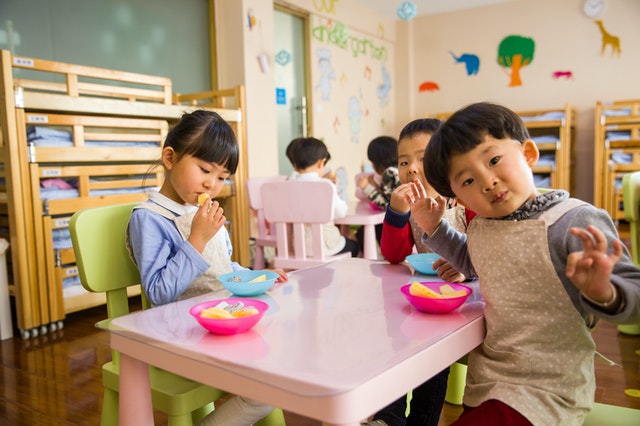Japanese school discipline is world-renowned for creating respectful, self-motivated learners without heavy punishments. Unlike Western systems that often rely on detention or suspensions, Japan’s approach focuses on community responsibility, daily habits, and moral growth.sis on Moral Education (Dotoku)
Japanese schools don’t just focus on academics—they prioritize character development.
-
Moral Education Classes (Dotoku): Students learn values like respect, responsibility, and cooperation.
-
Daily Reflections (Hansei): Kids are encouraged to reflect on their actions and improve.
2. Student-Led Cleanup (Souji)
One of Japan’s most famous disciplinary practices is souji, where students clean their own classrooms and school areas.
-
Teaches Responsibility: No janitors mean students take ownership of their environment.
-
Builds Teamwork: Working together fosters respect and discipline.
3. Strict Yet Respectful Classroom Rules
Japanese teachers maintain order without yelling or harsh punishments.
-
Silent Entry & Exit: Students bow and enter classrooms quietly.
-
Hand Raising: Speaking only when called upon ensures discipline.
-
Group Accountability: The whole class may reflect if one student misbehaves, encouraging peer support.
4. School Uniforms & Appearance Standards
Most Japanese schools enforce strict dress codes.
-
Uniforms (Seifuku): Promote equality and reduce distractions.
-
Grooming Rules: Hair length, accessories, and shoe colors are often regulated to maintain discipline.
5. Lunchtime Discipline (Kyushoku)
Even lunch is a learning experience!
-
Serving Each Other: Students take turns serving meals, teaching humility.
-
Eating in Silence (Sometimes): Some schools encourage quiet, mindful eating.
-
No Waste Policy: Kids are taught to finish their meals, reducing food waste.
6. Community & Peer Pressure (Positive Reinforcement)
Japanese society values harmony, so students naturally encourage good behavior.
-
Group Mentality: Misbehavior reflects poorly on the whole class, so peers help correct actions.
-
Praise Over Punishment: Teachers focus on rewarding good behavior rather than punishing bad actions.
7. After-School Clubs (Bukatsu) Teach Discipline
Most students join sports or cultural clubs where they learn:
-
Punctuality
-
Respect for Seniors (Senpai-Kohai system)
-
Commitment & Hard Work
Why Japanese School Kids Are So Well-Behaved
-
Parental Involvement: Families reinforce school discipline at home.
-
Cultural Values: Respect for authority is deeply ingrained.
-
Consistency: Rules are enforced uniformly, creating clear expectations.
Final Thoughts
Japan’s school discipline system isn’t about fear—it’s about building responsible, respectful, and independent individuals. By focusing on community, self-reflection, and moral values, Japanese schools create an environment where students thrive academically and socially.
Would you like to see some of these practices in schools worldwide? Let us know in the comments!
Would you like a section on how Japan handles bullying (ijime) or a comparison with Western discipline methods? Let me know how to improve this blog! 😊
The Japanese “Hansei” Technique: A Beautiful Lesson in Self-Reflection & Growth
In Japan, discipline isn’t just about following rules—it’s about self-improvement. One of the most powerful yet simple techniques Japanese schools use is Hansei (反省), which means “reflection” or “self-examination.”
What is Hansei?
Hansei is the practice of pausing, analyzing mistakes, and committing to do better—without self-blame. It’s not about guilt; it’s about growth.
How Japanese Students Practice Hansei:
-
Daily Reflection Time
-
At the end of class or club activities, students take a moment to think:
-
“What did I do well today?”
-
“Where could I improve?”
-
-
Some schools have “Hansei notebooks” where kids write their thoughts.
-
-
The 3-Step Hansei Method
-
① Acknowledge the Mistake (Without excuses)
-
② Understand Why It Happened (Look for root causes)
-
③ Plan to Improve (Set a small, actionable goal)
-
-
Group Hansei (For Classrooms & Teams)
-
If a team loses a sports match or a class misbehaves, they discuss:
-
“What could we have done better?”
-
“How can we support each other next time?”
-
-
Why Hansei is So Powerful
✔ Builds Humility – Teaches kids to accept imperfections.
✔ Encourages Growth Mindset – Mistakes = Learning opportunities.
✔ Reduces Repeat Mistakes – Instead of punishment, focus on solutions.
✔ Creates Calm Discipline – Less yelling, more self-awareness.
Example of Hansei in Action:
A student forgets homework. Instead of just getting scolded, they reflect:
-
“I didn’t prepare my bag the night before.” (Acknowledge)
-
“I was distracted by games and rushed in the morning.” (Understand)
-
“Tonight, I’ll pack my bag right after dinner.” (Improve)
How to Use Hansei at Home or School (Even Outside Japan!)
-
For Parents: Ask your child at dinner: “What’s one thing you did well today? One thing to improve?”
-
For Teachers: End class with 2 minutes of silent reflection.
-
For Adults: Try journaling Hansei-style at the end of the day.
